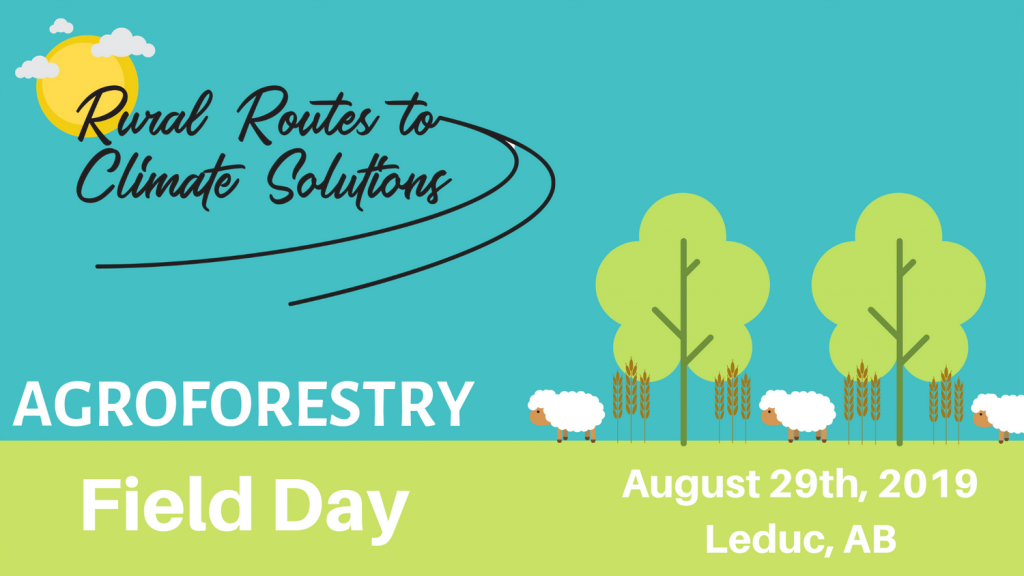Agroforestry is agriculture incorporating the cultivation and conservation of trees. It has long been believed that trees, crops, and livestock can be grown together as a cohesive system to help improve the overall outputs of a farm. Evidence of agroforestry systems can even be seen as far back as the Middle Ages and can be found all across the globe from the Americas to Europe to Asia. The concept of incorporating trees back into agricultural management is now getting a new lease on life in modern agriculture in Alberta and we are giving you the opportunity to see for yourself!
Date: August 29th, 2019; 1:00pm-4pm
Location: Leduc County (register for directions)
Presenters: University of Alberta agroforestry researchers and Noel St-Jean, executive director of the Alberta Woodlot & Extension Society (AWES)
Cost: FREE
Join us for a field day at the University of Alberta’s agroforestry test plots in Leduc, in partnership with AWES and University of Alberta researchers who will give us a tour of a working agroforestry operation. Come and check out the interactions between the plants, trees, and livestock and see first hand how their relationship to each other serves to enhance the overall health of the farm.
Noel St-Jean will provide information on shelterbelts and eco-buffers. The shelterbelt has been part of the rural Alberta landscape for many years. They have been planted along the roadsides and field margins as the best way to manage agricultural lands if you want to reduce winds speed effects and also control snow accumulations. The secondary effects of these features has been an increase in growth and productivity of both crops and cattle.
The new and modern version of the shelterbelt structure is called an Eco-Buffer. It performs in the same manner as the traditional shelterbelt, but it also adds many other features and values to agricultural land. Eco-buffers create habitat for animals, birds and native pollinators one of the severely affected species of insect in western Canada due to some agricultural practices. It also provides a variety of species of trees and shrubs that help in enhancing the environmental values of land and creates biodiversity not normally seen with the traditional shelterbelt. It can provide an economic gain to both agricultural crops and also commercial forest crops if designed and managed properly. Eco-buffers can provide an increase in value in both in annual revenue and temporary revenue when harvesting and rejuvenating the tree component of the eco-buffer.
Want to learn more? We recommend listening to our Agroforestry podcast episode with former federal research scientist Gary Bank in preparation for the field day.
Rural Routes to Climate Solutions (#RR2CS) is a program of the Stettler Learning Centre. We empower Alberta’s agricultural producers and the communities they live in with climate solutions. Our partners include Food Water Wellness Foundation, Young Agrarians, Organic Alberta and many farmers across the province!

